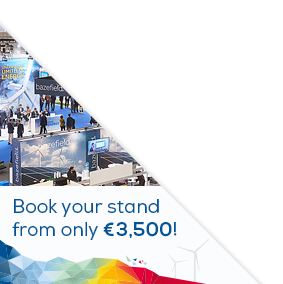Posters
Siblings:
ProceedingsProgrammeProceedingsSpeakersPostersContent PartnersElectrification StageMarkets TheatreR&I ActivitiesStudent DayProgramme Committee & abstracts reviewersPresenters dashboardCome meet the poster presenters to ask them questions and discuss their work
We would like to invite you to come and see the posters at our upcoming conference. The posters will showcase a diverse range of research topics and provide an opportunity for delegates to engage with the authors and learn more about their work. Whether you are a seasoned researcher or simply curious about the latest developments in your field, we believe that the posters will offer something of interest to everyone. So please, join us at the conference and take advantage of this opportunity to learn and engage with your peers in the academic community. We look forward to seeing you there!

PO248: Weather-dependent passive thermography and thermal simulation of in-service wind turbine blades
Somsubhro Chaudhuri, Scientific Staff, Bundesanstalt für Materialforschung und -prüfung
Abstract
The operation, inspection, and maintenance of wind turbines is considerable logistical challenge for operators. This is further exacerbated by the complex structure of wind turbine blades (WTBs)that makes inspection and evaluation of findings a challenge. WTBs are multi-material (glass fibre reinforced polymer GFRP, balsa wood or PVC foam, glue, etc.) structures based on specific, proprietary designs. To avoid premature WTB failure, a range of inspection techniques have been developed and currently used in operation. Infrared thermography (IRT) is one of them. The work presented here is part of an ongoing multi-partner project titled “EvalTherm”: the evaluation of passive thermography as a non-destructive inspection tool of WTBs in operation. This paper specifically discusses the aspect of performing ground-based passive thermography on WTBs and the corresponding issues. Finite-element (FE) based simulations are performed using COMSOL Multiphysics® to artificially replicate the thermal response of a WTB. This enables introducing well-known defects in WTBs in the FE model and simulating their thermal response. In addition, a scalable FEM model of an entire rotor blade was developed based on a typical structure. The goal is a general blade model which can be fitted to a specific design by a range of geometrical parameters and shape factors. Field inspection of in-service WTBs is performed using ground-based passive thermography. In parallel, a simulation of the WTB structure with input parameters and boundary conditions based on measurements performed during corresponding field measurements is developed to predict the thermal response of the WTB. Comparing these simulations with real data acquired with passive thermography allows the validation of simulated thermal responses, and thus provide an objective analysis of any thermal anomalies seen in field measurements.







